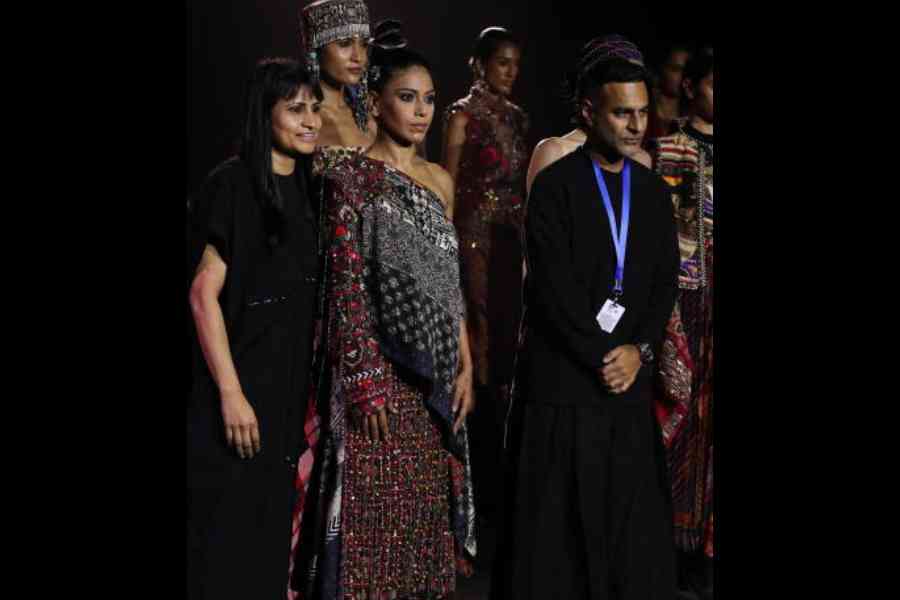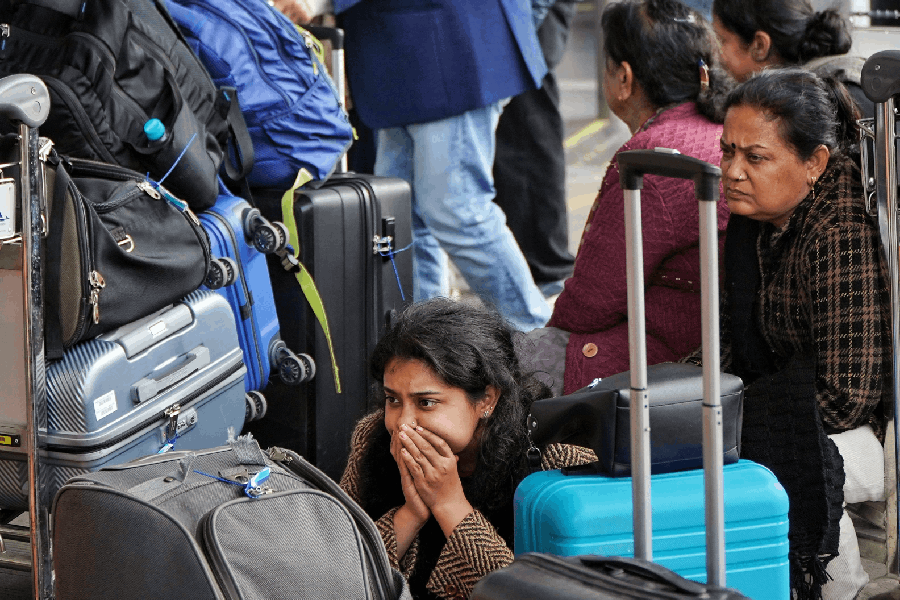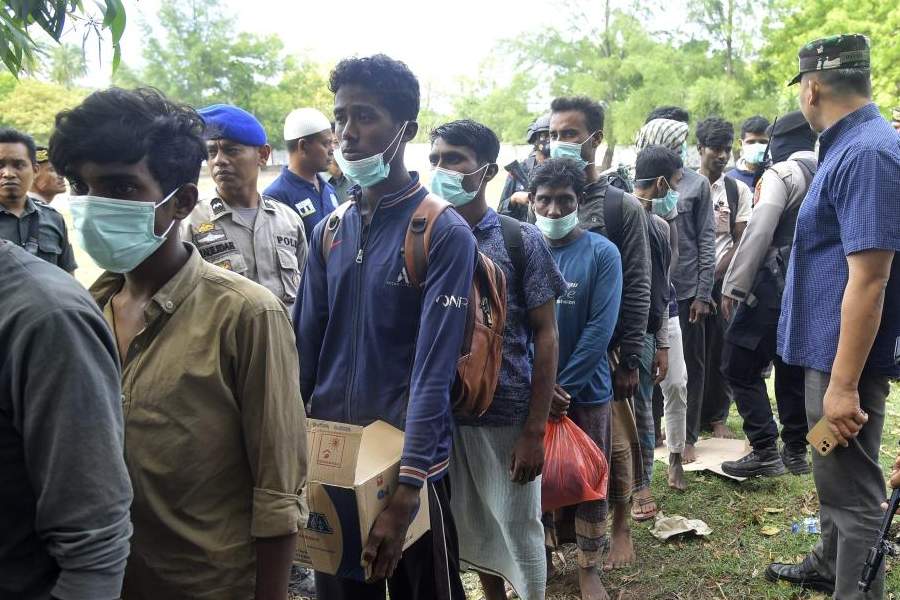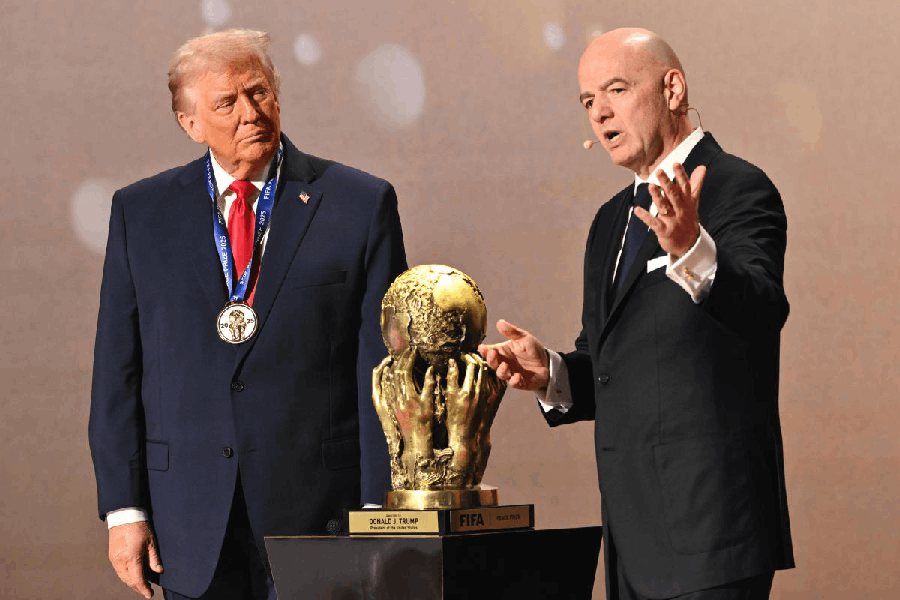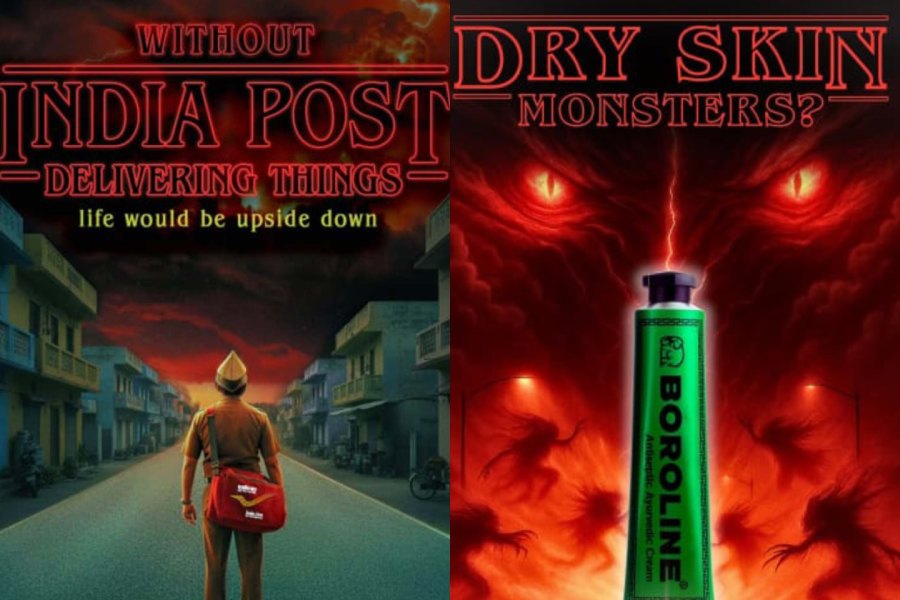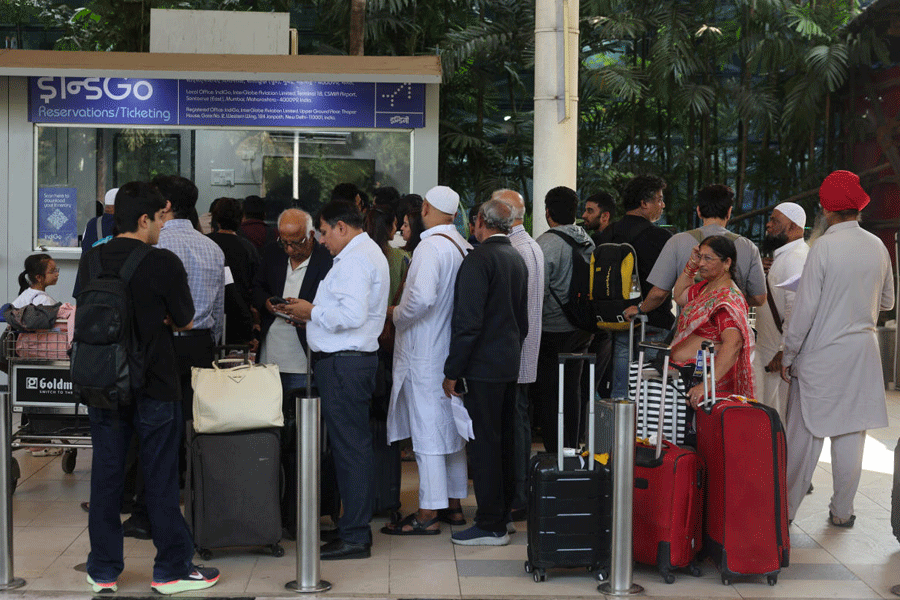Aseem Kapoor’s Akaar was dramatic with elements of boho cool and laden with crafts that translated into statement pieces. Surreal and steeped in India, but very global. “The collection is inspired by the Peruvian tribe’s myths around the eclipse. What we wanted to try is get the whole layering aspect and the whole positive side of how the tribes are treating the eclipse. The Nazca lines became an important part and a part of the motif language throughout the collection,” Aseem said at the post-show press meet.
Britannica defines Nazca lines as “groups of geoglyphs, large line drawings that appear, from a distance, to be etched into Earth’s surface on the arid Pampa Colorada (Coloured Plain or Red Plain), northwest of the city of Nazca in southern Peru. They extend over an area of nearly 190 square miles (500 square km)”.
Aseem said he found the thought process of the tribes fascinating. “There’s chaos, but there’s harmony in the way they execute things, and it’s not for fashion. They don’t do anything to look good. It is necessity-based. So that mindset is what is very interesting. So that’s why season on season, we work with different tribes and different silhouettes,” he smiled.
Anasuya Sengupta, who won the best actress award in the Un Certain Regard category at the 77th Cannes Film Festival last year, opened the show in a one-shoulder, intricately embellished, layered ensemble. “In this particular piece, you can actually see there’s a whole threadwork happening on a sheer base... there are hand-cut wooden beads. And then there are different motifs here. The layering comes with all our silhouettes and techniques. In terms of techniques, there’s a lot of threadwork, there’s a lot of marori work, which we are known for, and there’s a lot of mirrorwork. And we keep kind of evolving season on season. We don’t restrict ourselves to a particular technique,” explained Aseem.
Music added to the mood. “I also want to talk about the musicians, what they brought to the show. I think that was the best part, and we were very scared to align the video to the musicians, to the models, and getting the whole mystery and the darkness to the show, still not becoming very negative. So, I think that was something which was a takeaway,” added Aseem.
t2 caught up with the dynamic designer for a more in-depth chat backstage.
The showcase was too cool, Aseem!
The show was like an enriching experience for us also, because it was the first time we were trying to do a video like this, where we shot extensively for two days before and had live music to align all of this. And these are all the things that kind of, in terms of values, in terms of artists, in terms of aesthetic, it all aligns with what Pooja (Haldar, co-founder) and I believe in.
And we had crazy fun creating the show. We were very scared about how it all would go and how it all would come together because it is a very strong aesthetic. We are talking about a certain thing which has not been done, and also with an Indian designer, with the Indian silhouettes. We had so much fun. Like this is for the world from India.
What is the ethos when you create? Do you always visualise India on a global platform when you’re designing?
I do, actually. India is essential to every single thing we do, the way I think. I am Indian. So I’m very proud of every single thing India has achieved… culturally and socially. I think we are doing brilliantly. So, India will always be a central theme. And then we also have to cater to the world.
And right now, there’s no difference between a girl sitting in Delhi or a girl sitting in New York. They’re all doing the same thing. They’re talking the same language. So why should we look at a different world? The whole world is one platform now. So it just happens that the rituals and the culture are the central inspiration, but the clothes are for the world.
You’re such a guru of clashing prints and boho chic...
What I have fun with is that the mind has to be a certain way for creating this mixture of things. It can’t be a normal mind. Purely in terms of how we look at things, you have to be erratic, a little zoned out. And that’s how you can actually mix up things, because if you see, when we start any of the things, we always start with probably a print. Then it goes into a motif of embroidery and then a silhouette. It’s just a whole combination. So it’s like cooking. At every stage, you keep adding one thing, and eventually the dish turns out beautiful.
Experience helps. You have to know what you’re going after, but a lot of times, we are clueless about what we are going after. We just keep adding. We just keep adding and then stop. Okay, this is it. This is where you stop, and now, we move to the next direction. And, now, because there’s so much colour, let’s just pair it with something solid. Now there’s a bigger print. Now you pair it with something smaller. It comes so instinctively to both of us. It’s very difficult to explain exactly how it goes. There is a graphic element. There’s a floral element. It can be just a mix of everything.
And that’s the fun of it. There’s no one single rule for it. And I can’t even teach it! The whole idea is careless and controlled chaos. I always love this whole line of delicious ambiguity. There’s a beautiful poem that kind of combines how ambiguous things can become a beauty in themselves. And when you don’t know, that’s when you kind of create something new.
You’re mostly in black, Aseem. When you design for men now, you put colours on them...
We are artists. I am not the art. This is what we do on a daily basis. If I’m part of it, then I’ll not be able to see things in a holistic way. So you need to stay away and just create.
How have the last five years been for you?
It’s going to be five years. We did a launch with Ensemble in Mumbai, and it was a sell-out on the first day. It’s certainly been a rollercoaster, but thankfully and fortunately, it’s only been highs. We have not seen lows till now, but I’m always prepared for it, because that’s how life is.

